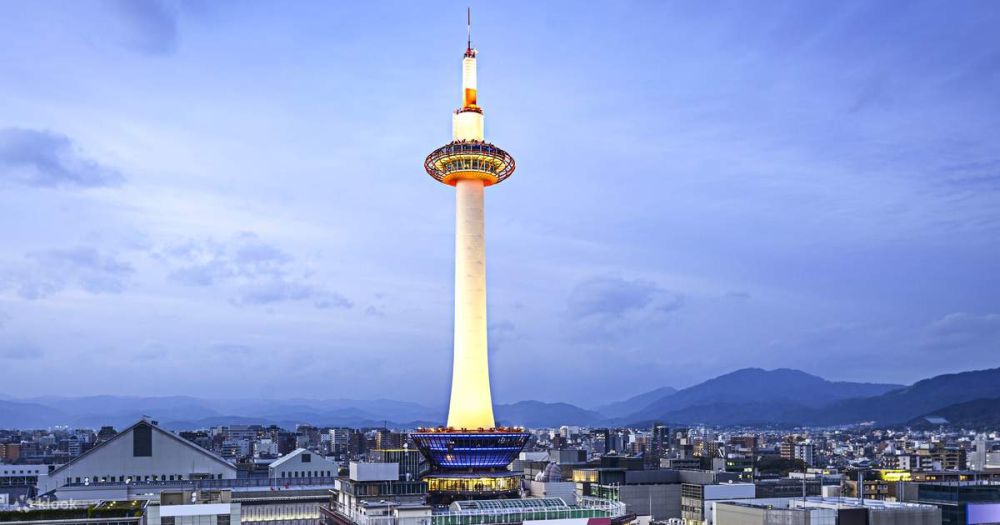

Kyoto, once the capital of Japan, has long been a focal point for cultural and historical tourism. The city is renowned for its classical Buddhist temples, as well as gardens, imperial palaces, Shinto shrines, and traditional wooden houses. It's also famous for its formal traditions such as kaiseki dining and its regional specialties like kyo-yasai (traditional Kyoto vegetables) and matcha (green tea).
Tourism in Kyoto dates back centuries, as it has always been a significant cultural center in Japan. However, the post-World War II era saw a global increase in leisure travel, and with it, a steadily growing stream of international tourists to Kyoto. The city's rich history, exemplified by the fact that it escaped bombing during the war, meant that its wealth of historical buildings and artifacts remained intact and available for visitors to explore.
Kyoto Tower, the tallest structure in Kyoto and a modern contrast to the city's ancient architecture, was completed in 1964, coinciding with the inauguration of the Shinkansen (bullet train) line between Tokyo and Osaka, with Kyoto Station being one of the primary stops. The construction of Kyoto Tower can be seen as a symbol of the modernization of Kyoto as a tourist destination while maintaining its cultural heritage.
Kyoto Tower was designed by Makoto Tanahashi, an architect who created the tower to withstand both earthquakes and typhoons. It stands atop a nine-story building, which contains a hotel and other commercial facilities. The observation deck at 100 meters offers visitors panoramic views of the city against the backdrop of mountains surrounding the Kyoto Basin.
The construction of the Kyoto Tower brought about a mix of excitement and controversy as it posed a stark contrast to the city's traditional skyline. Nonetheless, it quickly became an iconic part of Kyoto, acting as a beacon for tourists and a symbol of the city's ability to meld the old with the new.
Recent trends in Kyoto tourism reflect a broader shift towards sustainable and responsible travel. Tourists are increasingly seeking authentic experiences that allow them to engage with local culture and history while minimizing their environmental impact. This includes staying in traditional ryokan (Japanese inns), participating in tea ceremonies, and visiting Kyoto's historical districts in quieter, off-peak seasons.
Moreover, experiences that blend tradition with contemporary culture are gaining popularity. For instance, tourists might attend a modern art exhibition in a centuries-old temple or participate in fusion cooking classes that combine classic Kyoto flavors with modern techniques.